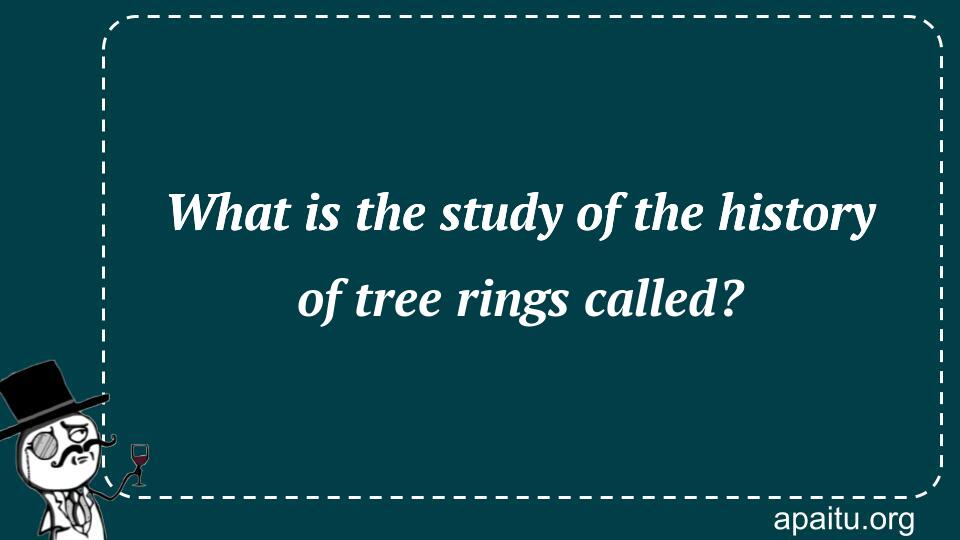Question
Here is the question : WHAT IS THE STUDY OF THE HISTORY OF TREE RINGS CALLED?
Option
Here is the option for the question :
- Arborology
- Dendrochronology
- Taxology
- Mixomycology
The Answer:
And, the answer for the the question is :
Explanation:
Tree-ring analysis for historical events like climate change is known as dendrochronology. Dendrochronologists can count and quantify tree growth rings with the use of a core sample obtained by biopsy. Studying these tree rings can also shed light on major climate occurrences.

Dendrochronology is the study of tree rings, and it is a valuable tool for understanding the history of the natural world. By analyzing the growth patterns of trees, dendrochronologists can gain insights into past climate conditions, environmental changes, and human activities.
The basic principle behind dendrochronology is that trees grow one ring per year, and each ring represents a record of that year’s growth. The rings are formed as the tree grows, with the outermost ring representing the most recent year of growth. By counting the rings, dendrochronologists can determine the age of a tree and the number of years that have passed since a particular event.
dendrochronology can also be used to study past climate conditions. The width of a tree ring can indicate the amount of growth that occurred in a given year, with wider rings indicating favorable growing conditions and narrower rings indicating less favorable conditions. By comparing the tree ring patterns of different trees, dendrochronologists can create a record of past climate conditions and identify patterns of drought, flood, and other environmental factors.
Dendrochronology can also be used to study human activities. Trees that have been cut down or damaged can provide valuable information about past land use and logging practices. By analyzing the growth patterns of these trees, dendrochronologists can determine when the trees were cut down, how many times they were harvested, and how long it took for the forest to recover.
One of the most famous examples of dendrochronology is the study of the ancient ruins of Mesa Verde in Colorado. By analyzing the tree rings of the wooden beams used in the construction of the buildings, dendrochronologists were able to determine the exact year that the structures were built and provide insights into the lives of the ancient Pueblo people who lived there.
dendrochronology is used in a wide range of fields, from archaeology and environmental science to climate studies and forestry management. By studying the history of tree rings, scientists can gain a deeper understanding of the natural world and the impact of human activities on the environment.
dendrochronology is a valuable tool for studying the history of tree growth and understanding the natural world. By analyzing the growth patterns of trees, dendrochronologists can gain insights into past climate conditions, environmental changes, and human activities. From studying ancient ruins to managing modern forests, dendrochronology has a wide range of applications and continues to be an important area of research for scientists around the world.